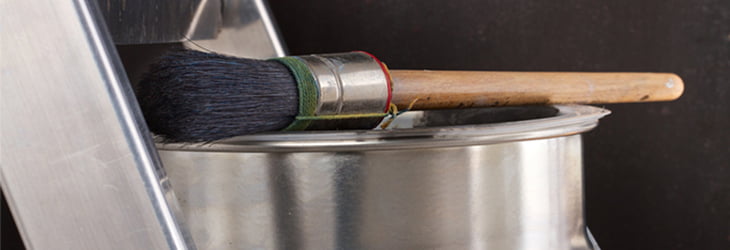Common DIY mistakes when using ladders and steps
17/08/2015

When undertaking any DIY project, it’s vital that you take the right precautions and understand the health and safety risks of the job. Whether it’s wallpapering, changing a light fitting on a high ceiling, or attempting to clean out the gutters – whenever you use steps or ladders there are risks.
In fact, there are around 70 deaths a year that result from a DIY accident – of which the majority (50 out of 70) are a result of accidents involving ladders and step ladders. With this in mind, today’s blog is all about the common mistake you might make when using ladders and steps and how to keep safe.
-
Working from old, damaged access equipment
Before beginning any DIY job check your step ladder or ladder to ensure it’s in good conditions. Loose fittings, bent rungs, missing feet or corroded metals all carry serious risks.
-
Placing a ladder on any old surface
As surprising as it may seem, it’s far too common to just plonk a ladder down without really thinking about the best place for it. All ladders should sit on good, level ground and the stability of the ladder should be checked each time you move it. Furthermore, the surface a ladder leans against is also important. Opt for a solid surface, not a window frame or sill.
-
Failing to use the right ladder for the job
Overreaching is a common cause of many DIY accidents. It only takes a stretch too far before you topple over. Trying to make the most of your ladder’s height by working from the top rungs or treads isn’t a solution either; this too frequently leads to accidents. Always make sure your ladder or step ladder gives you the appropriate working height. If it doesn’t, don’t risk it – instead invest in a new ladder.
-
Turning down help
Getting help can sometimes hurt our pride, but when working from a height it’s important to get all the support you can. Unless you work on ladders frequently, it’s a good idea to get someone to ‘foot’ and steady the ladder. If this isn’t possible, make sure you use a ladder with an extension bar fitted at the base to increase its stability.
-
Failing to set up a ladder correctly
Whatever type of ladder you’re using, it needs to be fully opened to ensure the bars are locked into place. The angle of a single side ladder also needs to be 1:4 – 1 unit away from the supporting structure for every 4 units of height.
-
Juggling too many things at once
Working at a height can be tricky. All your attention should be focused on staying safe. Reaching out to the side to access things, or leaning down to reach tools all carry unnecessary risks. You need to make sure you maintain three points of contact when climbing and working from a ladder.
So next time you begin a DIY project, plan ahead, follow the appropriate instructions and don’t work to tight timescales. Working under pressure and rushing a job can lead to careless mistakes.

